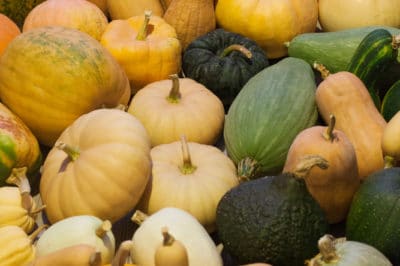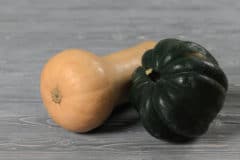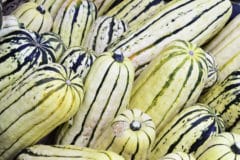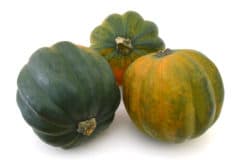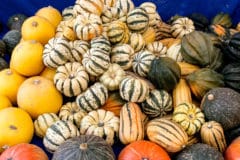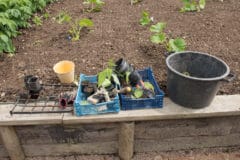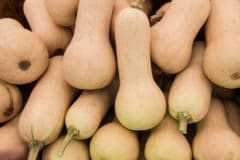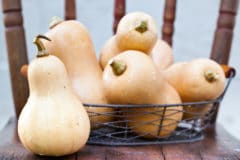Summer Squash Storage
Fresh summer squash can be stored unwashed in plastic or paper bags in the refrigerator for 1-2 weeks. To get adequate circulation, leave one end of the bag open. If you know you will not be eating the squash soon, it is best to use one of long-term storage options: freezing, dehydrating, or pickling.
Winter Squash Storage
The pleasures of your garden can live on during the cold winter months as you enjoy soups, desserts, and side dishes of winter squash. The different types of winter squash have different requirements for storage.
Why and How to Cure Winter Squash
Curing is usually a 10-20 day period of storing squash in a warm, well-ventilated location. Temperatures between 80°F(27°C) and 85°F(29°C) are ideal. The garden is a great place to cure squash, but bring them inside when rain threatens. The squash should not get wet after harvesting.
Curing prolongs the shelf life by removing the water and toughens the skin of the squash. A tough outer skin reduces the chances of premature rotting. Curing also concentrates the sugar which gives the squash a sweeter taste.
The only winter squashes that do not benefit from curing are the acorn, delicata and sweet dumpling squashes. Curing these can reduce their storage life and quality.
How to Store Winter Squash
All winter squash can be safely stored in a cool, dry room for up to 7 months, depending on the type. The ideal conditions are a temperature of 50°F(10°C) to 55°F(13° C.) and a relative humidity of 60-70 percent. Here are some types of winter squash with their storage life:
- Acorn (1 month)
- Delicata (2 to 3 months)
- Spaghetti (2 to 3 months)
- Buttercup (3 to 6 months)
- Turban (3 to 6 months)
- Kabocha (4 to 6 months)
- Banana (3 to 6 months)
- Butternut (3 to 6 months)
- Cushaws (4 to 6 months)
- Blue Hubbard (6 to 7 months)
Some gardeners cushion their cured squash in newspaper-filled boxes and store them in an unheated room or garage: others store them on straw-covered newspaper in a room with the proper conditions. Never let the squash touch another squash. Always store in one layer.
Rotting of the squash is always possible even with all the precautions taken. Check the squash weekly and throw away any rotting ones.
